Like marketers always say, your landing pages are the gateway to conversions. So, if the gateway does not appeal to the readers, it will obviously damage your conversion rate. People will bounce off and the landing page will not contribute to your business growth.
According to research, the average bounce rate of landing pages is 70-90%. If you ask about the guidelines on how the bounce rates are judged, here’s a data to explain.
30% and below: Excellent
30-50%: Good
50-70%: Average
70-80%: Poor
80% and above: Bad
Wondering why your landing pages see a high bounce rate?
Here are some reasons people fail to stay longer on your landing pages and choose to close the window.
Along with the causes of the problem, we have also suggested the remedy to resolve it.
1. You are attracting the wrong target audience
This point is particularly relevant in the case of your ads. Where you are displaying your ads, which keywords you are targeting, what kind of parameters you have selected — all these factors will bring traffic to your landing page.
Now, if you have placed your ad on an irrelevant website just because they have a low fee, you won’t be able to bring quality traffic to your landing page. The same holds if you have chosen the wrong keywords to target for your PPC ad.
How to fix it:
Always take help from the SEO team to suggest the right keywords and bid accordingly. Optimize the landing page based on those insights. It will help you avoid wasting the PPC budget and get engaged traffic on the page. In addition, you must create elaborate customer personas so that the visitors you attract are more interested in the products you offer.
2. Your landing pages seem to mislead the readers
Of course, you might not have done it deliberately. But it is still likely that your landing pages come off as misleading. That’s the #1 reason your landing pages see a high bounce rate. Remember that the user has visited your landing page after clicking on a PPC ad, an organic search result, an email link, or social media post. At that instant itself, they make up a picture of your brand in their mind.
Suppose you have followed all the copywriting best practices while drafting the landing page copy. Despite that, if the user bounces off, it implies that you could not stand true to their expectations.
How to fix it:
Make sure your source, landing page copy, visuals, and CTA are perfectly in sync with what the users are looking for.
Take a look at this example to understand better.
On searching for the term “Time tracking tool”, I came across this ad by WorkComposer. The ad features everything that I am looking for in a tool.

So, I click on it and land on this landing page.
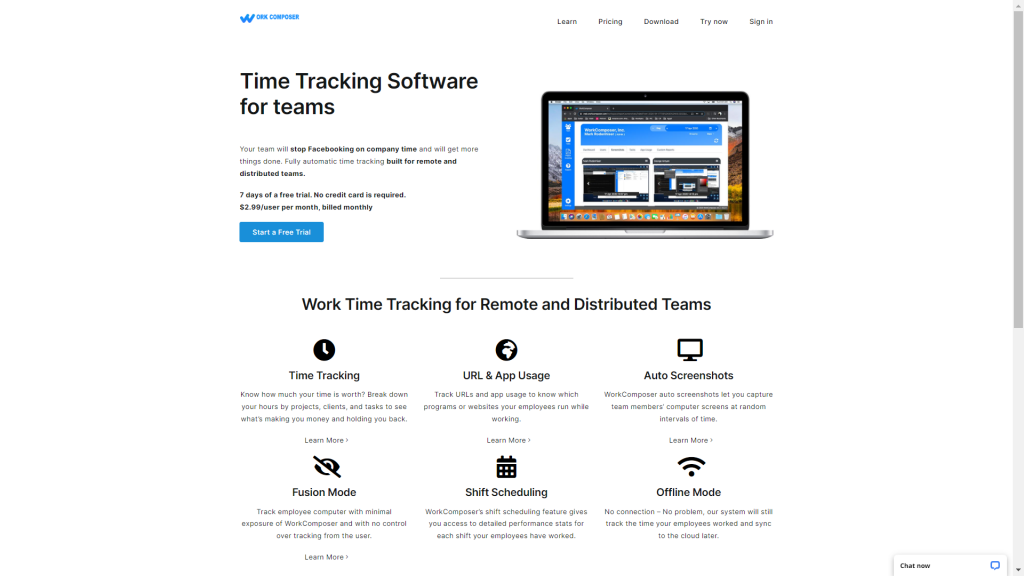
Now, that’s exactly what I had expected —
- A clear headline
- An engaging copy that proposes the usefulness of the tool
- The pricing details highlighting the free trial
- Their USPs accompanied by actionable CTAs in every fold
As it addresses the reader’s requirements, it will encourage them to take action and prevent them from bouncing off.
3. You have a loooooooong form
Your visitors are busy people. So, if your lead capture form has too many fields, it will frustrate the user and increase the bounce rate. It is understandable that you need more information to personalize your communications. But, avoid doing it at the initial stage to decrease the bounce rate.
How to fix it:
Get your sales and marketing teams together to decide how they want to approach the leads and what information they would need. Accordingly, you can build your lead capture form with the necessary fields.
Let’s assume that you have to collect data for 8-10 fields. How will you go about it?
The answer is: Create a multi-step conversion process and ask for the information in stages.
Alternatively, make the offer more enticing for the reader. As a thumb rule, the offer must be greater than or equal to the kind of information you are requesting from the reader.
Take a look at this example by Hispid Books.
Initially, they ask only for the email address to get the user started.

In the next step, they show the registration form asking for the user’s first name, last name, email, and password. They have also given the option to log in through Google which is a more convenient way to ensure lead collection.
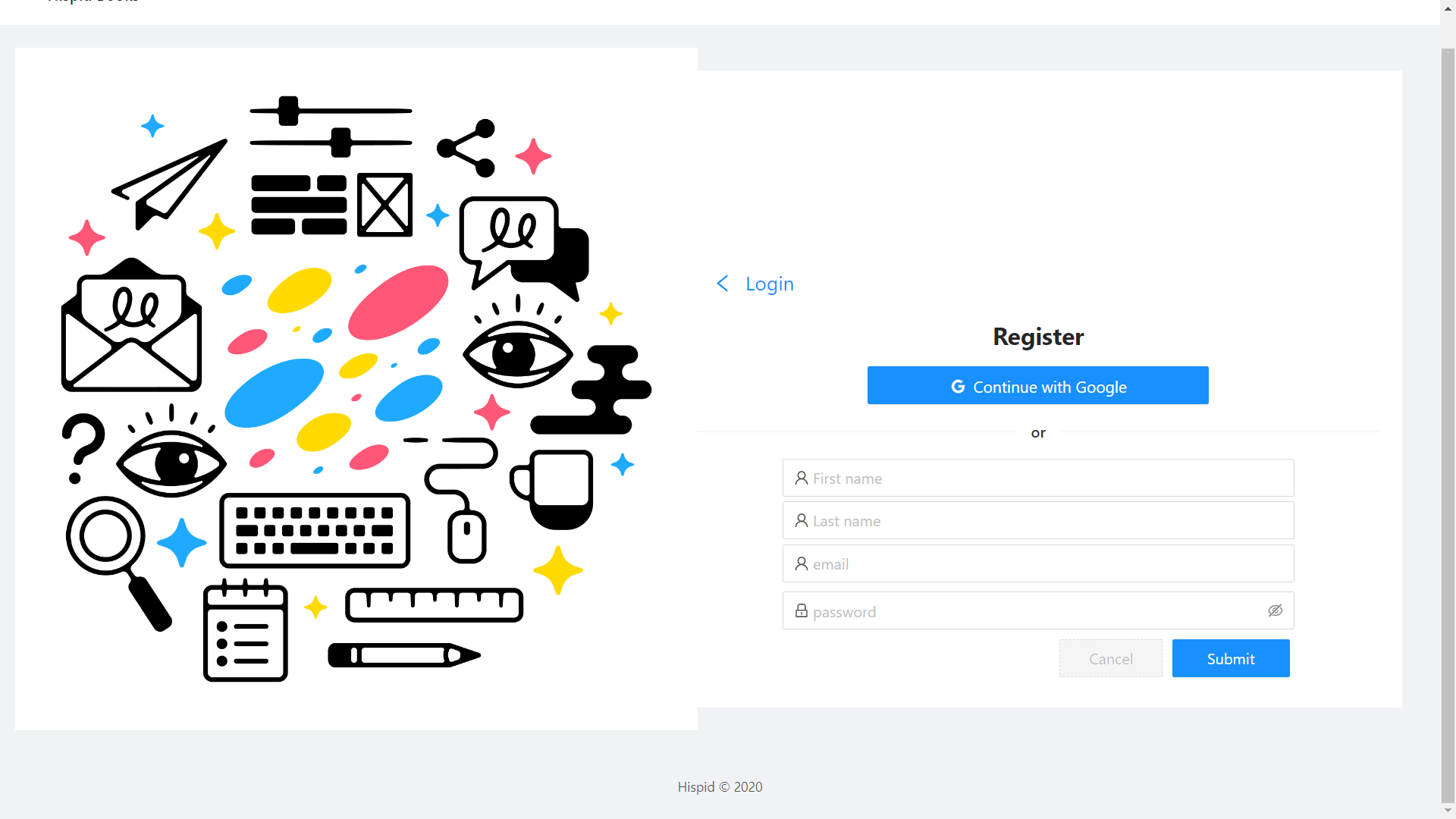
4. The landing page is tough to navigate
Having too many elements on the landing page will make it difficult to navigate. As a result, people will be unable to find the information they are looking for and bounce off. A cluttered landing page will overwhelm the readers and distract them from taking the action.
How to fix it:
Here are some best practices that will make your landing page easy to navigate.
a. Choose the font size and font face in such a way that the copy is easy to read. The safest bet is to use sans serif fonts and 16 px size. The advantage of using sans serif fonts is that they are easy to read even if the font size is small.
b. Refrain from using any fancy fonts that are difficult to read and make the landing page less accessible.
c. Write the copy suitable for a 6th-grade student. You can use the Hemingway App Editor to check for readability.
d. Avoid using fancy language and jargon.
e. Have a clean layout that follows the principles of visual hierarchy. Make the page as easy to skim through as possible.
f. Use formatting features like “Bold”, “Italic”, and “Underline”, and set proper color contrast to draw attention to the right places on the landing page like headline and CTA.
g. Carry out the squint test and see whether the important elements of the page stand out and help convey the message.
Squint test: Narrow your eyes and look at the landing page from a distance to evaluate the page for readability.
5. Your landing page takes too much time to load
Google suggests that the probability of a mobile site visitor bouncing increases 123% when page load time goes from 1 to 10 seconds. The same holds for your landing page. The longer your page takes to load, the higher will be the bounce rate.
Take a look at these figures to understand the correlation between loading time and bounce rate:
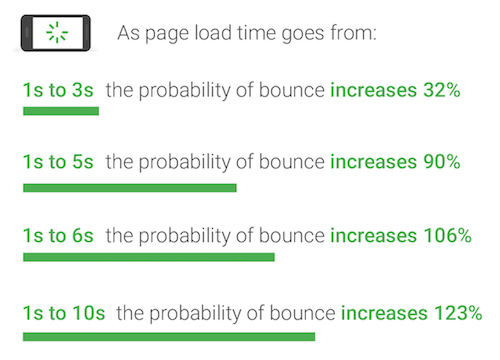
Moreover, the first 5 seconds of page load time are crucial for conversion rates. With every additional second of load time, the conversion rate falls by an average of 4.42%.
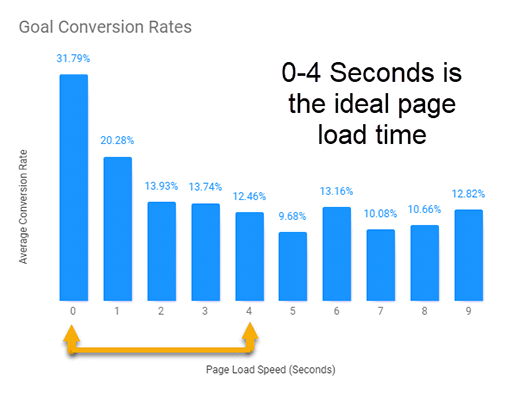
How to fix it:
You can improve your landing page speed in several ways as discussed below:
1. Have few page elements
Google has discovered that 70% of the pages they tested were more than 1 MB, 36% were over 2 MB, and 12% exceeded 4 MB. If you are using a 3G connection, 1.49MB takes about 7 seconds to load. The load time delay can be attributed to multiple page elements like visuals, buttons, interactivity, and text. Ultimately, people will leave your landing page while it is still loading
2. Set the expectations right
Before designing and coding the landing page, decide on its loading time. Choose the elements that do not take too much time to load. The best practice is to use visuals judiciously and not just for the sake of it. The favicons, logos, and product images eat up two-thirds of the landing page size. According to research, pages that converted leads had 38% fewer images in comparison to pages that couldn’t convert. It is advisable to use an image compressor tool if you have to include multiple images on your landing page.
3. Use JavaScript only if needed
JavaScript causes a delay in the loading time by stalling the HTML code parsing. Instead, you can use AMP for websites to make sure that there are no loading issues.
Read more here: How to increase the loading speed of your landing page?
6. The visitors are unable to figure out what action to take.
The aim of your landing page is to encourage people to take action and convert. That’s why your CTA is the most important element of the landing page unless the objective of your landing page is simply to educate the readers and let them leave.
How to fix it:
Never hide your call-to-action. Make it instantly noticeable by taking the squint test yet again. If your CTA is barely visible, it’s time to change it. You can do away with the navigation bar on the landing page and make it more focused on the offer you want to promote.
Here’s an email landing page example that focuses on corporate gifting without any distractions.
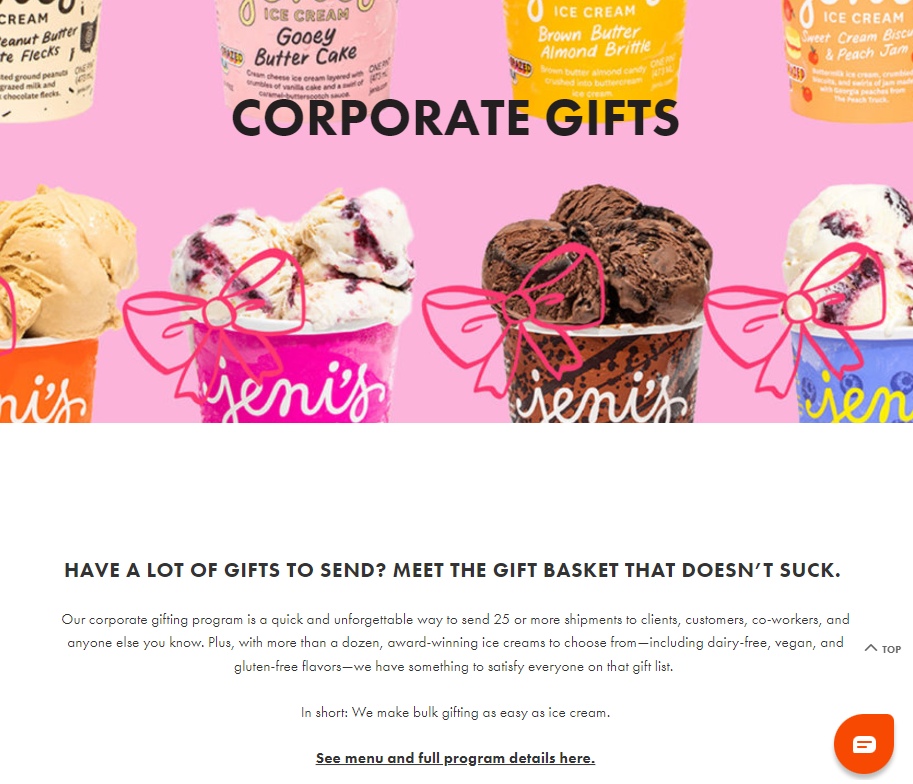
It will increase the likelihood of conversions and reduce the bounce rate. Moreover, you can also experiment with a first-person narrative on your landing page as suggested by Michael Aagard of Content Verve.
Take a look at this screenshot to understand how a minor change can influence your landing page conversion rate.
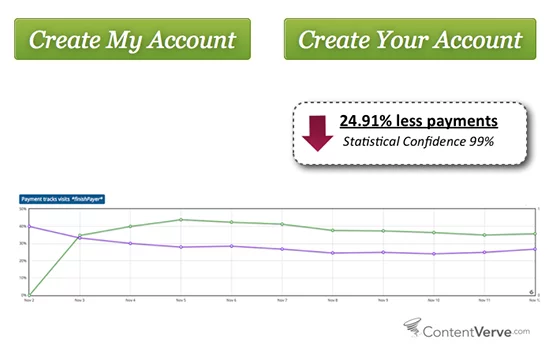
Key Takeaways
1. Let’s take a look at all the tips to reduce landing page bounce rate in a nutshell:
2. Target high-value keywords that have a better purchase intent.
3. Make the landing page readable and easy to navigate.
4. Employ a squint test and make sure that the right elements draw the user’s attention.
5. Pick the font face and font size wisely.
6. Ensure proper color contrast.
7. Place the CTA in such a way that it garners click-throughs.
8. Keep the landing page free from distractions and focused on a single message.
9. Incorporate plenty of white space.


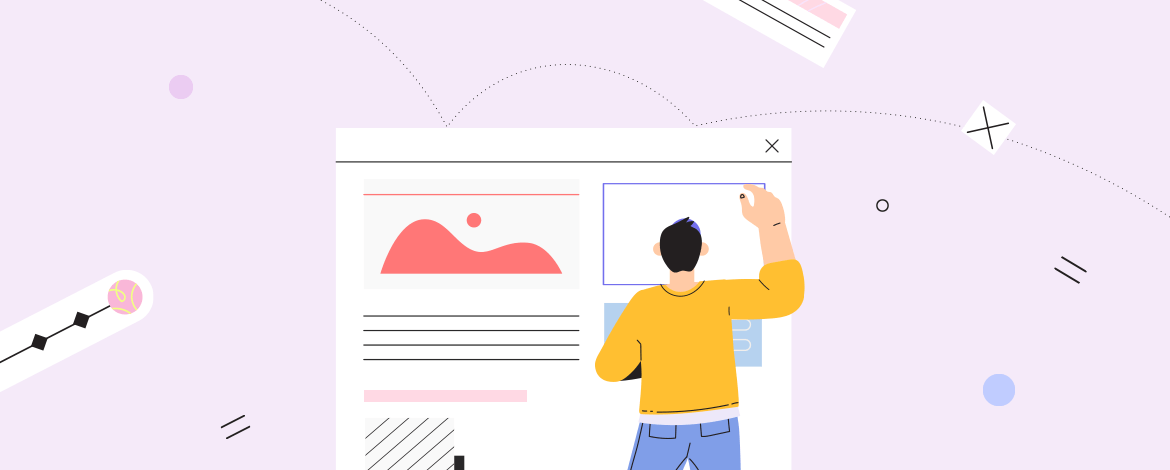

Disha Bhatt (Dave)
Latest posts by Disha Bhatt (Dave) (see all)
A Comprehensive Guide to Drip Email Marketing with Actionable Tips That Work Like a Charm
Weighing the Pros and Cons of Shared and Dedicated IP Addresses